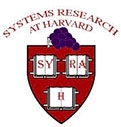7.3 Intrinsic Error
Violations of the triangle inequality occur more frequently and to a greater extent on Azureus than either on PlanetLab or for sets of DNS servers (see Section 3.3). We found, perhaps surprisingly, that removing a small number of the worst violators causes a large improvement in global accuracy. Not only do the violations these nodes take part in damage their own coordinates, but the damage they cause continues to reverberate throughout the system.
We performed an experiment where we removed a small percentage of the nodes with the largest triangle violations from the Azureus latency matrix and compared this to removing a random subset of nodes of the same size. We then computed a system of coordinates and found the relative error of each link. As Figure 14 illustrates, removing only the worst 0.5 percent of nodes leads to a 20 percent improvement in global accuracy. This data parallels results from theoretical work that showed how to decrease embedding distortion by sacrificing a small fraction of distances to be arbitrarily distorted [2]. These results show that if a mechanism could prevent these nodes from affecting the rest of the system, it would improve overall accuracy. Two example mechanisms for node self-detection and removal from the coordinate system are: (a) directly evolving an estimate of the extent of their violations by asking neighbors for latencies to other neighbors, and (b) determining if they are subject to traffic shaping (based on the modality of their latency distribution), and therefore a major cause of triangle violations. Preliminary experiments with self-exclusion based on a simple bimodality test show an improvement in accuracy of 8 percent at the 95th percentile.
Jonathan Ledlie 2007-02-23
